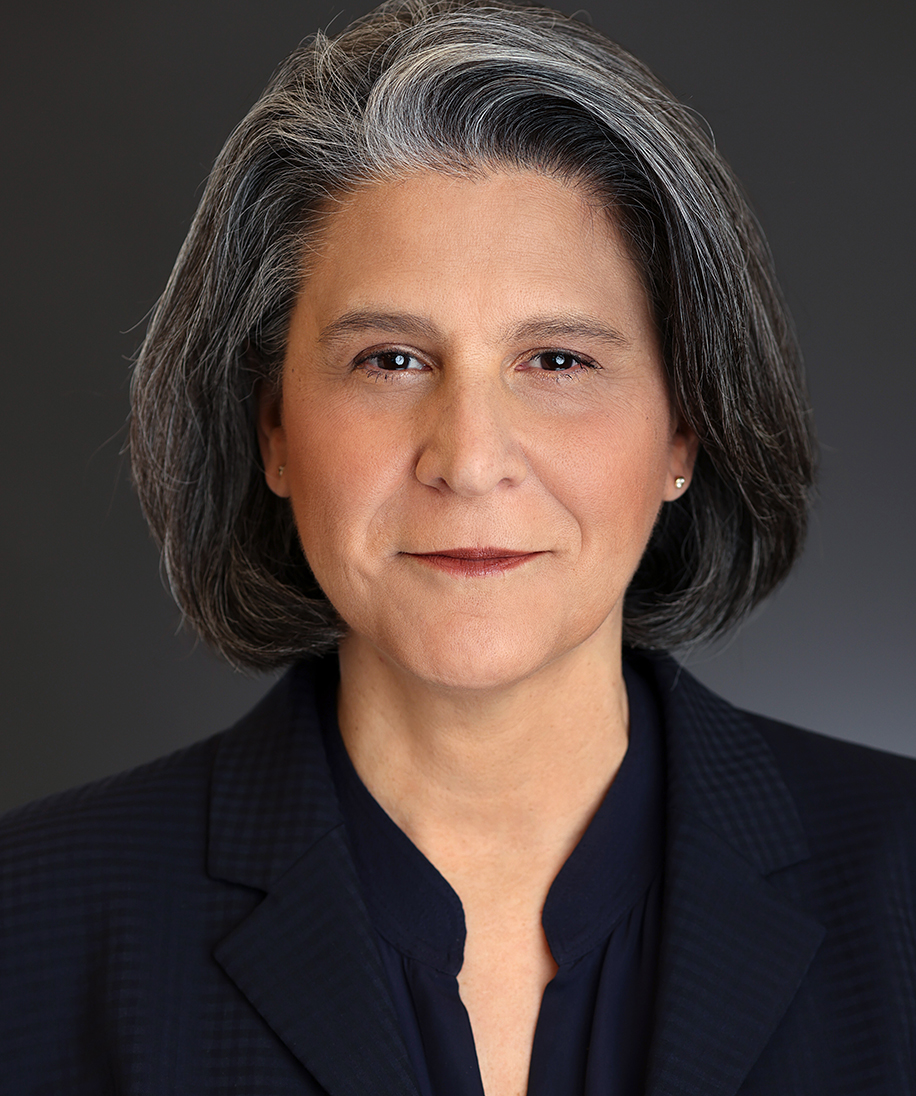Client Alert
What Employers Need to Know about the SCOTUS Affirmative Action Decision
July 05, 2023
By Kenneth W. Gage,Ryan D. Derry,
Sarah G. Besnoff,
Lindsey C. Jacksonand Elena R. BacaIntroduction:
Federal law governing affirmative action and non-discrimination in employment is unaffected by the Supreme Court’s highly publicized affirmative action decision published June 29, 2023. Still, the decision is sure to intensify energy behind the wave of recent challenges to employer diversity, equity, and inclusion programs. Therefore, employers should evaluate such programs to better understand any potential vulnerabilities and best advance their legitimate diversity, equity, and inclusion objectives. We discuss below.
Summary of Supreme Court Holdings
In the consolidated cases of Students for Fair Admissions, Inc. v. President and Fellows of Harvard College, Docket Number 20-1199, 600 U.S. __ (June 29, 2023), and Students for Fair Admissions, Inc. v. University of North Carolina, Docket Number 21-707, 600 U.S. __ (June 29, 2023),[1] the Supreme Court ruled that Harvard’s and UNC’s affirmative action programs impermissibly made admissions decisions based on race and color in violation of the Equal Protection Clause of the Fourteenth Amendment.
Harvard and UNC both used race as a plus factor, among many, in their admissions decisions. The questions presented to the Court were whether the practices of Harvard and UNC are consistent with the Equal Protection Clause of the Fourteenth Amendment and Title VI of the Civil Rights Act of 1964,[2] and whether the Court should overrule the 2003 decision in Grutter v. Bollinger,[3] and Fisher v. University of Texas at Austin.[4]
To recap: in Grutter, the Court held that the state had a compelling interest in the enrollment of a “critical mass” of under-represented students” to promote “cross-racial understanding,” “break down racial stereotypes,” and enable students to “better understand persons of different races.” On the facts, the Court held in Grutter that the use of race by the University of Michigan Law School did not violate the Fourteenth Amendment or Title VI. Thirteen years later, the Court in Fisher reaffirmed the holding in Grutter and upheld the undergraduate affirmative action program at the University of Texas.
In its decision in Students for Fair Admissions, the Court:
- Did Not Overrule the Core Holding In Grutter, But Narrowed Sharply the Opportunities for Affirmative Action in Higher Education
- The Court did not overrule Grutter or Fisher. The Court went to great lengths, however, to differentiate Grutter from the Harvard and UNC programs,[5] and it repeatedly called upon Grutter’s 2003 pronouncements that “all race-conscious admissions programs [must] have a termination point,” and it “expect[ed] that 25 years from [that decision], the use of racial preferences will no longer be necessary.”[6] Harvard’s and UNC’s programs and their stated goals have no “logical end point,”[7] according to the Court, which contributed to the decision to strike them down.
- A narrow lane for race-conscious admissions decision-making may survive for achieving a goal of a “critical mass” of under-represented students. However, the Court noted a lack of clarity behind any such goal and did not explain it.[8]
- The Court also offered that a university is not prohibited “from considering an applicant’s discussion of how race affected his or her life, be it through discrimination, inspiration, or otherwise.” “[U]niversities may not,” however, the Court said, “simply establish through application essays or other means the regime we hold unlawful today.”[9]
- Found No Compelling State Interest Tied to “Elusive” Diversity Goals:
- The Court found Harvard’s and UNC’s stated diversity and inclusion goals, which included, “better educating its students through diversity,” “producing new knowledge stemming from diverse outlooks,” and “promoting the robust exchange of ideas,” to be “elusive.” They were not “sufficiently coherent” and measurable to withstand the strict scrutiny required by the law for race-conscious decisions.[10]
- The Court said that its prior case law “rejected the notion that societal discrimination constituted a compelling interest,” and that “ameliorating societal discrimination does not constitute a compelling interest that justifies race-based state action.”[11]
- Found Harvard’s and UNC’s Race-Conscious Admissions Are Not Narrowly Tailored:
- First, the Court took issue with the racial categories at issue (e.g., Caucasian, Asian, etc.); concluding they were broad, too imprecise, and necessarily premised on stereotypes.[12] Criticizing the rationale behind such categories, the Court seemingly opens the door for similar challenges to these same racial categories used by the EEOC, Office of Federal Contract Compliance Programs, and state agencies across the country.
- Second, relying on Grutter’s pronouncement that no permissible affirmative action program could lead to a “negative” for any other race, the Court found that the predetermined number of admissions slots available ultimately meant applicants of other races (Asian-Americans and Caucasians) were sometimes denied admission due to their race.[13]
- Found Organizational Standing:
- The Court found organizational standing for Students for Fair Admissions because it was a 501(c)(3) with members. The Universities had challenged that the members did not actually fund the organization, so that it was not a real membership organization. The Court held that where an organization has been duly formed, and it can prove the membership of individuals, that the Court should not “require further scrutiny into how the organization operates” (e.g., who actually funds it).[14]
Considerations for Employers
Race-conscious decision-making in employment is and always has been unlawful under Title VII, except in very narrow circumstances allowed by the Supreme Court for remedial affirmative action efforts. In United Steelworkers of America v. Weber,[15] the Court ruled that voluntary, temporary, remedial affirmative action programs which seek to hire minorities who were historically underrepresented to remedy a racial imbalance among the employer’s workforce was permitted under Title VII. In Johnson v. Transp. Agency, Santa Clara Cnty,[16] the Court ruled that the employer agency could consider sex as a factor as part of a voluntary affirmative action plan for employee promotions to address traditionally segregated job classifications. The approved plan did not establish quotas, but rather, directed hiring to be governed by reference to calculations about the imbalance between the proportion of women in their workforce and the proportion of women in the area labor pool. The EEOC and OFCCP regulations defining affirmative action programs remain available to employers.[17]
In Students for Fair Admissions, the Court makes this point, and contrasts remedial affirmative action in the employment context with the universities’ practices, citing approvingly its decision in Franks v. Bowman Transp. Co.[18] There, the Court granted equitable relief of retroactive seniority status to African American applicants who were denied earlier employment due to illegal racial discrimination. The Court explained, “remediating specific, identified instances of past discrimination that violated the Constitution or a statute” remain a permitted use of “race-based government action.”[19]
In their concurring opinions, Justices Thomas and Gorsuch explained their views that Title VII similarly does not countenance race- or sex-conscious decision-making.[20] Justice Gorsuch sees no daylight between the antidiscrimination provisions of Title VI and Title VII, concluding that they are “neighboring provisions of the same statute—enacted at the same time by the same Congress” and “just next door” with “materially identical language.”[21]
The dissents also considered the impact in the employment setting. Justice Sotomayor questioned the impact of the decision on employers’ hiring pipeline.[22] Both Justices Sotomayor and Jackson argued that the Harvard and UNC’s race-conscious decision-making was already remedial in nature. Justice Jackson warned of the broader slippery slope: “With let-the-eat-cake obliviousness, today, the majority pulls the ripcord and announces ‘colorblindness for all’ by legal fiat. But deeming race irrelevant in law does not make it so in life.”[23]
For Employers, Challenges Will Continue…
In recent years, we have seen an increasing number of legal and legislative challenges to employer’s diversity, equity, and inclusion programs and practices.[24] The Court’s decision will likely be used as a roadmap for such efforts.
- Rise in Challenges to Workforce Diversity Programs: The Court’s standing holding gives well-funded “membership” organizations clearance to sue, and the Court criticizes goals founded on traditional DEI topics and racial categories. We will likely see increasing challenges to any number of diversity programs, including internships/fellowships/incubator programs or policies tying compensation and certain benefits to diversity goals.
- Challenge to EEOC/OFCCP Obligations: While no immediate effect is likely to be felt in EEO-1 reporting (mandatory annual data collection required of all private sector employers with 50 or more employees meeting certain criteria), or similar OFCCP regulations, the Court’s criticism of the racial categories used by those agencies is likely a harbinger of challenges to come.
- Reaction from State Legislatures: We have already seen a number of self-described “Anti-Woke” bills targeting diversity, equity, and inclusion trainings and programs recently.[25]
- Changing Standard for Reverse Discrimination Cases: In certain jurisdictions, there is an added Plaintiff’s burden for reverse discrimination cases under Title VII, wherein the Plaintiff has to show background circumstances that support the suspicion that the defendant is the unusual employer who discriminates against the majority (D.C., Sixth, Seventh, Eighth, and Tenth Circuits). This application of different standards will be fodder for continued litigation.
Steps Employers Should Consider Post-Students for Fair Admissions
Against this backdrop, employers should consider taking steps to serve their goals while addressing remaining risk of challenge:
- Review for Compliance: Identify all race-conscious and sex-conscious employment programs for evaluation. Consider programs such as diversity internships, fellowships, leadership opportunities; and programs tying executive compensation to diversity goal setting. Is the definition of “diversity” wider than race or sex, alone? Review your employee handbook and all policies and procedures for hiring, interviewing, and compensation setting are in accordance with law.
- Consider Voluntary Affirmative Action Plans: The Court made a strong point in support of remedial action plans targeted to “make whole” historical discrimination. Consider developing voluntary affirmative action plans to support your diversity goal setting.
- Prepare for the Pipeline: If colleges and universities become less diverse, employers will see that in the diversity of the talent pool available. Consider ways to legally enhance opportunities and the pipeline more broadly, in light of the challenges that could come.
- Train for Compliance, and Be Aware of Changing State Requirements. Consider updating your diversity, anti-discrimination, anti-harassment, and/or implicit bias trainings, particularly for hiring managers/recruiters/members of your compensation team. In developing trainings, keep aware of changing local laws.
We at Paul Hastings are continuing to watch this space as employers, investors, and regulators continue to scrutinize workforce compliance, DEI and ESG efforts. Contact us to continue the discussion.
[1] The consolidated opinion of the Court can be found at https://www.supremecourt.gov/opinions/22pdf/20-1199_hgdj.pdf. For the purposes of this Alert, we provided citation to the page numbers as listed on the document at this link.
[2] Title VI, 42 U.S.C. § 2000d et seq.
[3] Grutter v. Bollinger, 539 U.S. 306, 123 S. Ct. 2325, 156 L. Ed. 2d 304 (2003).
[4] Fisher v. Univ. of Texas at Austin, 579 U.S. 365, 136 S. Ct. 2198, 195 L. Ed. 2d 511 (2016).
[5] See Students for Fair Admissions at 36-39 (disputing the dissents’ reading of Bakke, Grutter, and Fisher).
[6] Id. at 21 (citing Grutter, 539 U.S., at 343).
[7] Id. at 30.
[8] Id. at 37.
[9] Id. at 39.
[10] Id. at 23.
[11] Id. at 35.
[12] Students for Fair Admissions at 25, 29-30.
[13] Id. at 27-28.
[14] Id. at 7-9.
[15] United Steelworkers of Am., AFL-CIO-CLC v. Weber, 443 U.S. 193, 99 S. Ct. 2721, 61 L. Ed. 2d 480 (1979).
[16] Johnson v. Transportation Agency, Santa Clara Cnty., Cal., 480 U.S. 616, 107 S. Ct. 1442, 94 L. Ed. 2d 615 (1987).
[17] See, e.g., 29 C.F.R. § 1608 (EEOC guidelines for formal Affirmative Action Plans); see also EEOC Guidance CM-607. On Thursday, the EEOC Chair issued a statement reflecting the point that “[d]iversity helps companies . . .” and the affirmative action decision “does not address employer efforts to foster diverse and inclusive workforces or to engage the talents of all qualified workers, regardless of their background. It remains lawful for employers to implement diversity, equity, inclusion, and accessibility programs that seek to ensure workers of all backgrounds are afforded equal opportunity in the workplace.” See https://www.eeoc.gov/newsroom/statement-eeoc-chair-charlotte-burrows-supreme-court-ruling-college-affirmative-action.
[18] Franks v. Bowman Transp. Co., 424 U.S. 747, 96 S. Ct. 1251, 47 L. Ed. 2d 444 (1976).
[19] Students for Fair Admissions at 15.
[20] Students for Fair Admissions at 27 (Thomas, J., concurring).
[21] Students for Fair Admissions at 4, 16 (Gorsuch, J., concurring).
[22] Id. at 67 (Sotomayor, J., dissenting).
[23] Id. at 25 (Jackson, J., dissenting).
[24] See, e.g., National Center for Public Policy Research v. Howard Schultz, et al., Case Number. 2:2022cv00267 (E.D. Wash.) (alleging that Starbucks violated its fiduciary duties by instituting DEI policies, including allegedly adopting goals of achieving higher levels of Black, Indigenous, People of Color (BIPOC) representation, implementing a tool to allow leaders to track diversity of employee population, building diversity goal setting into executive compensation, and committing to greater racial and ethnic diversity on their board of directors); DiBenedetto v. AT&T Servs., Inc., No. 121CV04527MHCRDC, 2022 WL 1682420, at *2 (N.D. Ga. May 19, 2022), report and recommendation adopted sub nom. DiBenedetto v. AT&T Servs., Inc., No. 1:21-CV-4527-MHC-RDC, 2022 WL 18777367 (N.D. Ga. June 6, 2022) (denying motion to dismiss in reverse racism promotions claim challenging AT&T's corporate-wide Diversity & Inclusion Plan (“DIP”); Duvall v. Novant Health Inc., No. 3:19-CV-00624-DSC, 2022 WL 3331263, at *19 (W.D.N.C. Aug. 11, 2022), amended on reconsideration in part, No. 3:19-CV-00624-DSC, 2022 WL 11271199 (W.D.N.C. Oct. 19, 2022) (affirming jury verdict, with modified damages, for reverse racism claim where the employer’s diversity, inclusion and health equity (hereinafter “D&I”) efforts were cited as evidence of discriminatory animus).
[25] See, e.g., Florida HB 999 and SB 266, which prohibit public institutions in Florida from funding or maintaining DEI programs. Likewise, in Texas, Senate Bill 17/House Bill 5127 will prohibit DEI offices, and diversity training for students and employees at public institutions in Texas after January 1, 2024. In South Dakota, House Bill 1012 has been signed into law which prohibits mandatory training or orientations about "divisive concepts,” and in North Dakota, Senate Bill 2247 forbids public institutions from conducting mandatory training on “specified concepts” related to race and sex. A slew of other bills have been proposed across the country. See, e.g., Alabama House Bill 7 (prohibit public institutions from promoting or endorsing certain “divisive concepts” relating to race, sex, or religion), Arizona Senate Bill 1694 (prohibit public colleges from requiring an employee to engage with DEI programming and establishing and employing a DEI office); Arkansas Bill 71 (prohibit state and local government agencies, and universities, from using affirmative action programs, and make violations a Class A misdemeanor), among others.
Contributors






